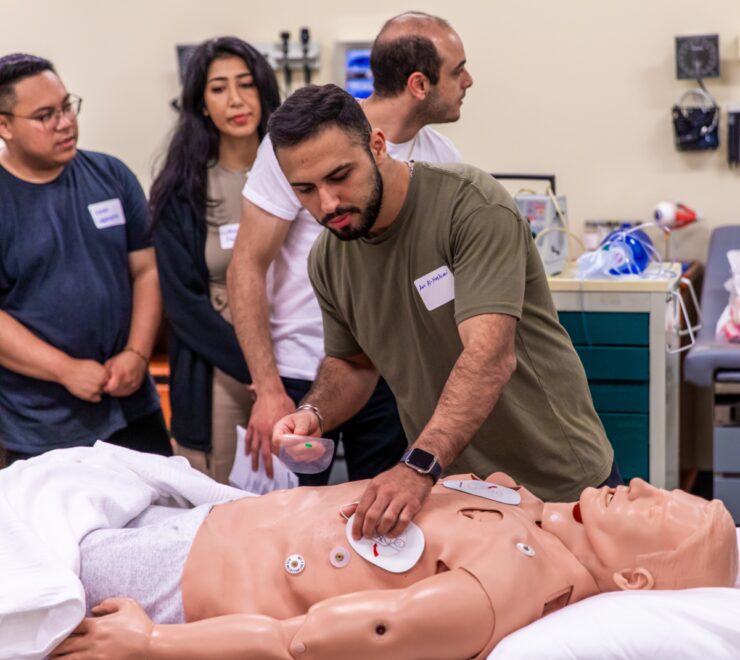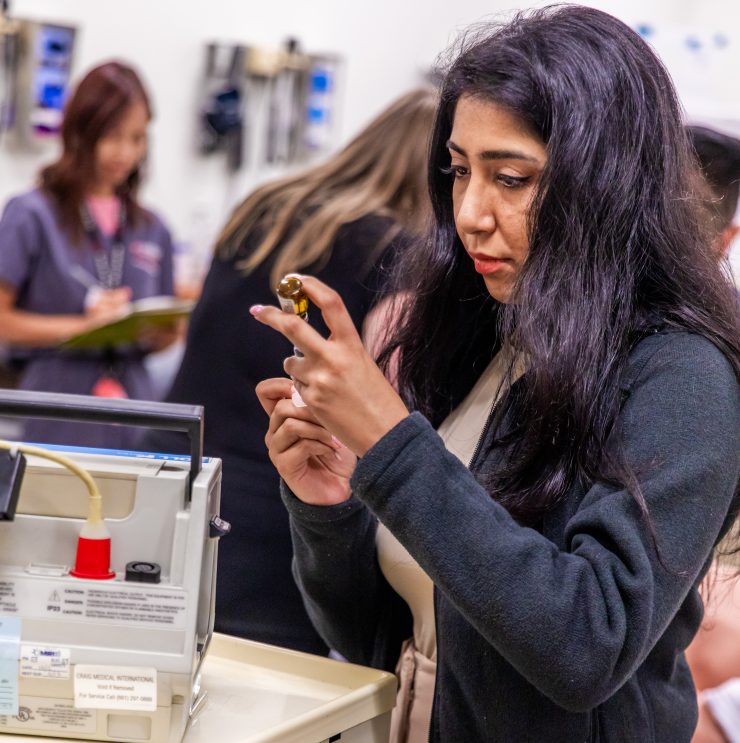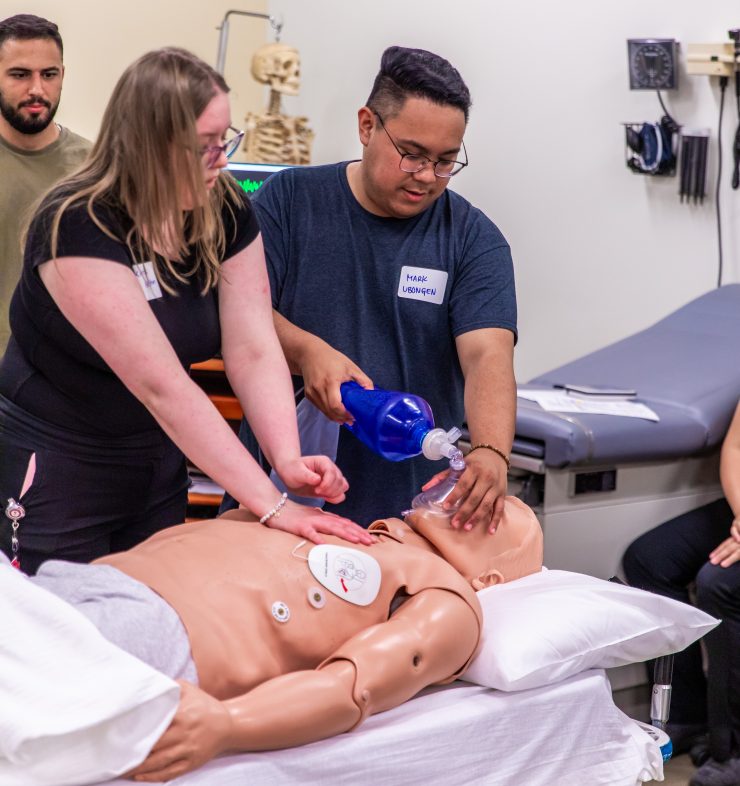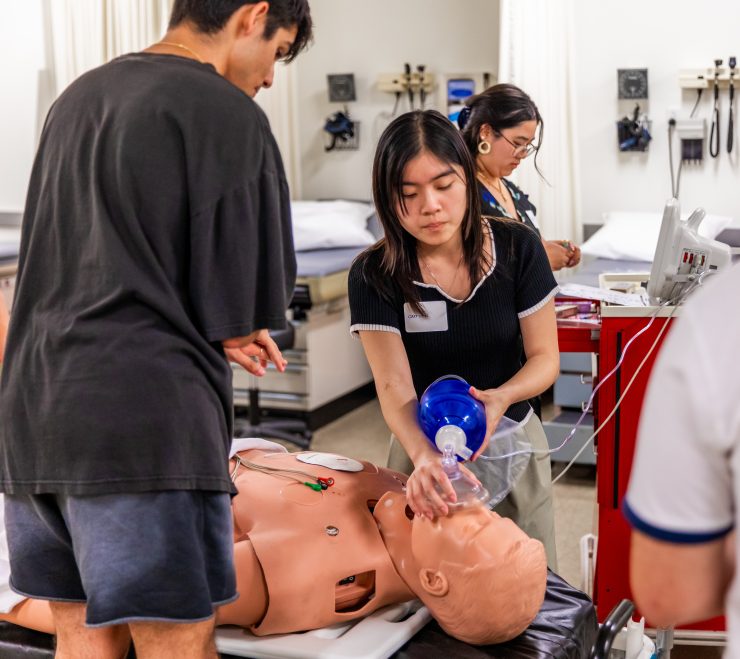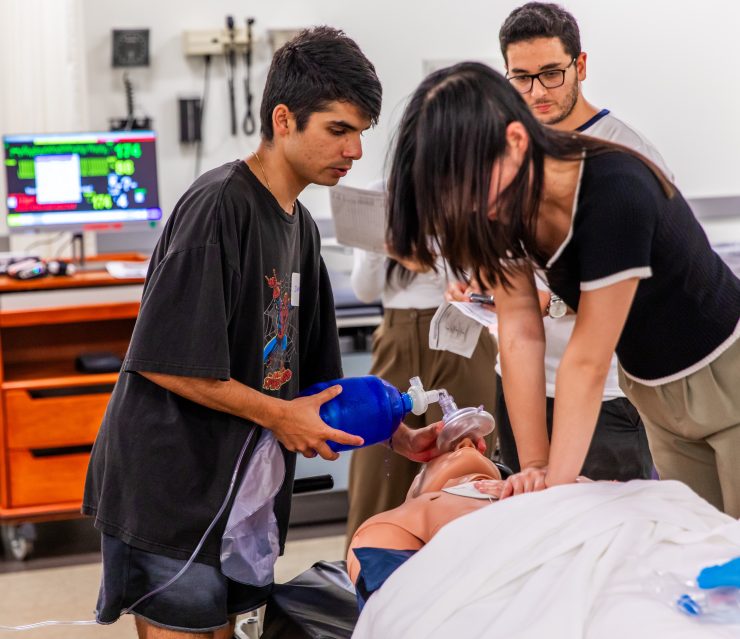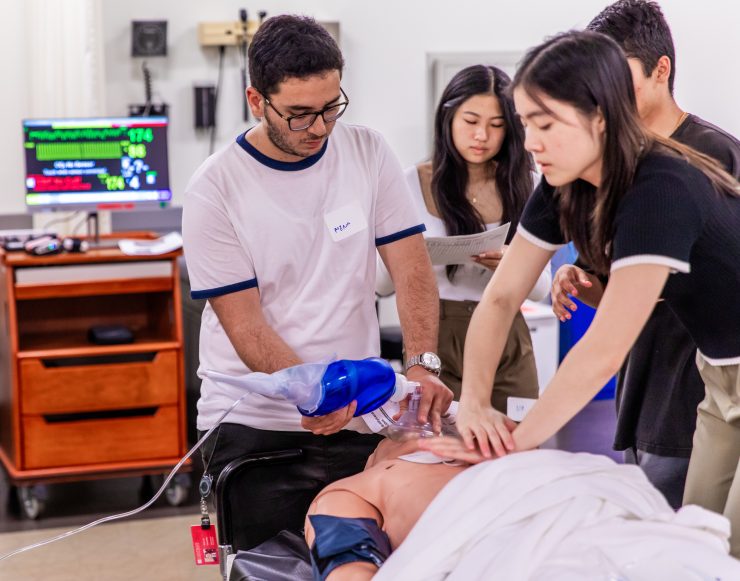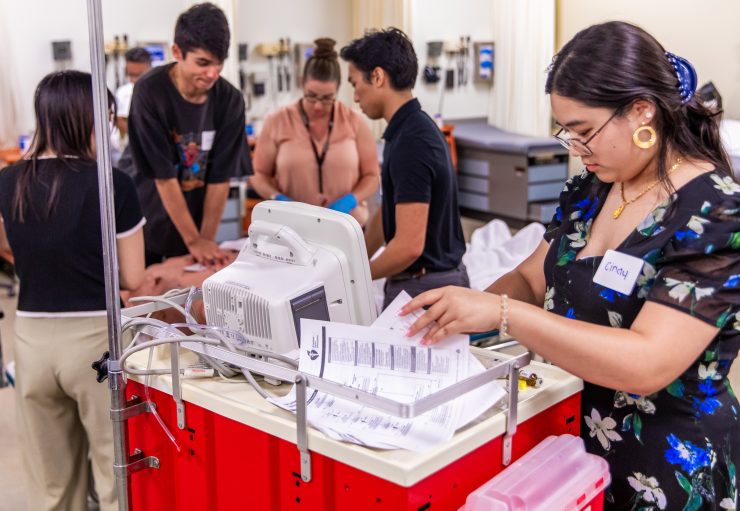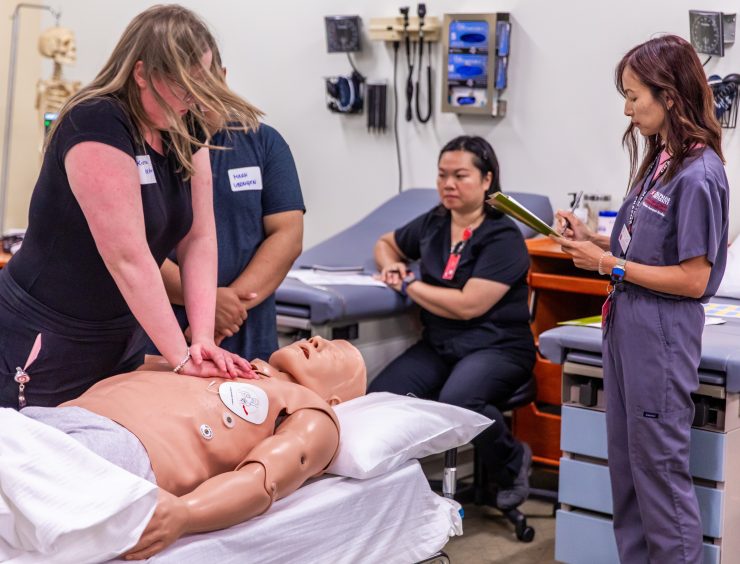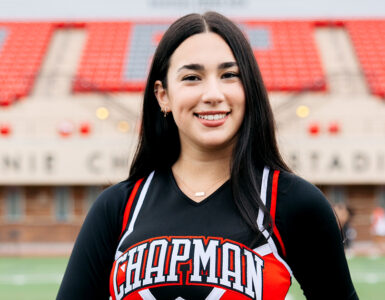A group of students gathers around a patient lying on a gurney. They have basic information: he was found lying on the ground and has alarming vital signs, including low blood pressure.
They attach a blood pressure cuff, cardiac monitor and blood oxygen sensor.
The students feel for a pulse – no pulse.
“We have a code blue!” one of them says.
As the patient is in cardiac arrest, a student does chest compressions while another puts an oxygen mask over the patient’s face. They try an electric shock to restart his heart and continue CPR and oxygen.
When there is still no pulse, they call for an epinephrine injection. They do more chest compressions and administer another shock.
Then, a pulse.
Or there would be if the patient was real.
The patient is a mannequin used by Chapman University physician assistant (PA) and pharmacy students at Chapman’s Rinker Health Science Campus in training simulations.
Faculty from Crean College of Health and Behavioral Sciences and the School of Pharmacy design medical-condition cases to “simulate live patient care experiences in emergency room settings so the students can practice working together on interprofessional health care teams,” says Mike Burney, chair of the MMS PA Studies program.
The mannequins are designed to reflect a variety of ages, races and genders.
“Having mannequins that represent different age groups and backgrounds allow the students to gain training with mannequins that represent patients across the lifespan, and from the communities we serve,” Burney says.
The mannequins are used in scenarios when a patient is unconscious, like in a cardiac arrest or opioid overdose.
“You can practice real medical procedures on the mannequins, like starting an IV or performing an intubation,” Burney says. “The mannequin is attached to a cardiac monitor which provides the students with important vital signs and an electrical heart rhythm during the simulation.”
In each simulation, PA students should do a physical exam, order diagnostic imaging and labs and assess vitals and cardiac rhythms on the monitor. Pharmacy students are expected to procure and prepare medications at the bedside and work with the PA students to assess and treat the patient, according to Associate Professor Kimberly Won, who teaches in both programs.
The simulations give pharmacy students hands-on practice drawing up IV medications, assembling pre-filled syringes and calculating weight-based doses. They also get to try their hand at chest compressions and administering oxygen through a mask.
“The mannequins provide students training on performing procedures that they will later perform on real patients,” Burney says. “It doesn’t take the place of training on real patients, but it provides an opportunity for students to think and work in a safer environment.”
Students also learn to communicate, apply their book knowledge and receive feedback from faculty, he says.
The simulations that the mannequins are part of help students become “collaborative practice-ready” health professionals, according to research Won and her colleagues published recently.
